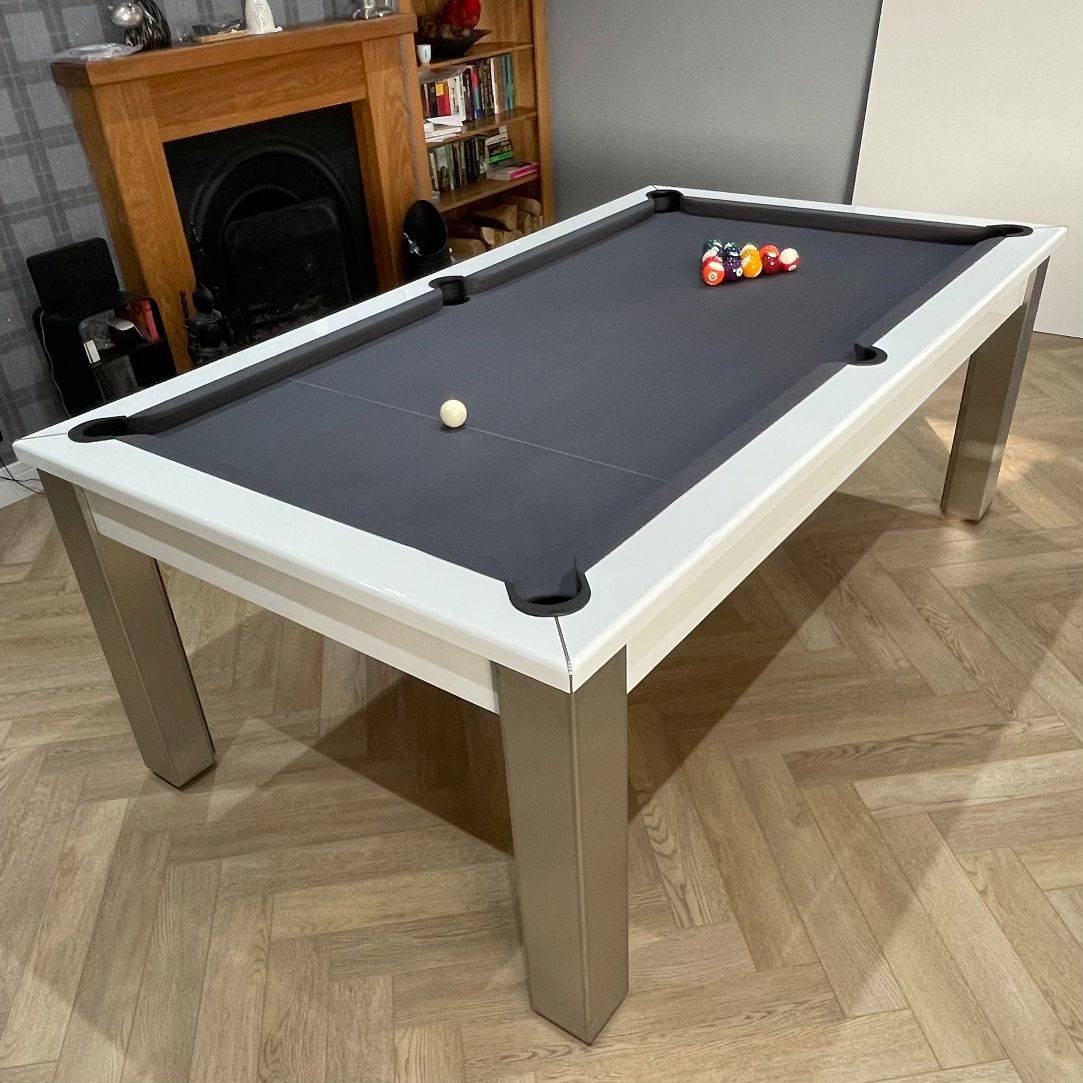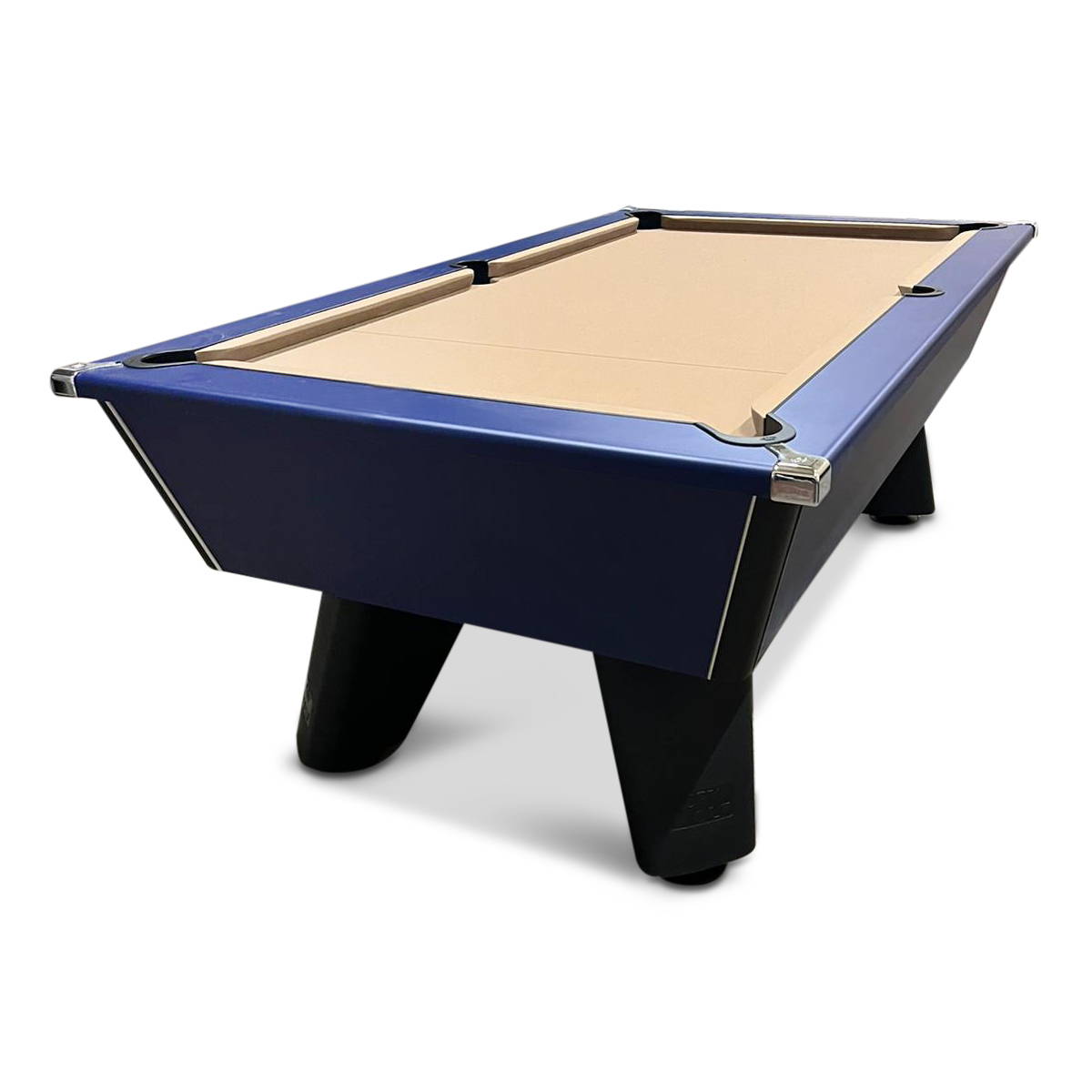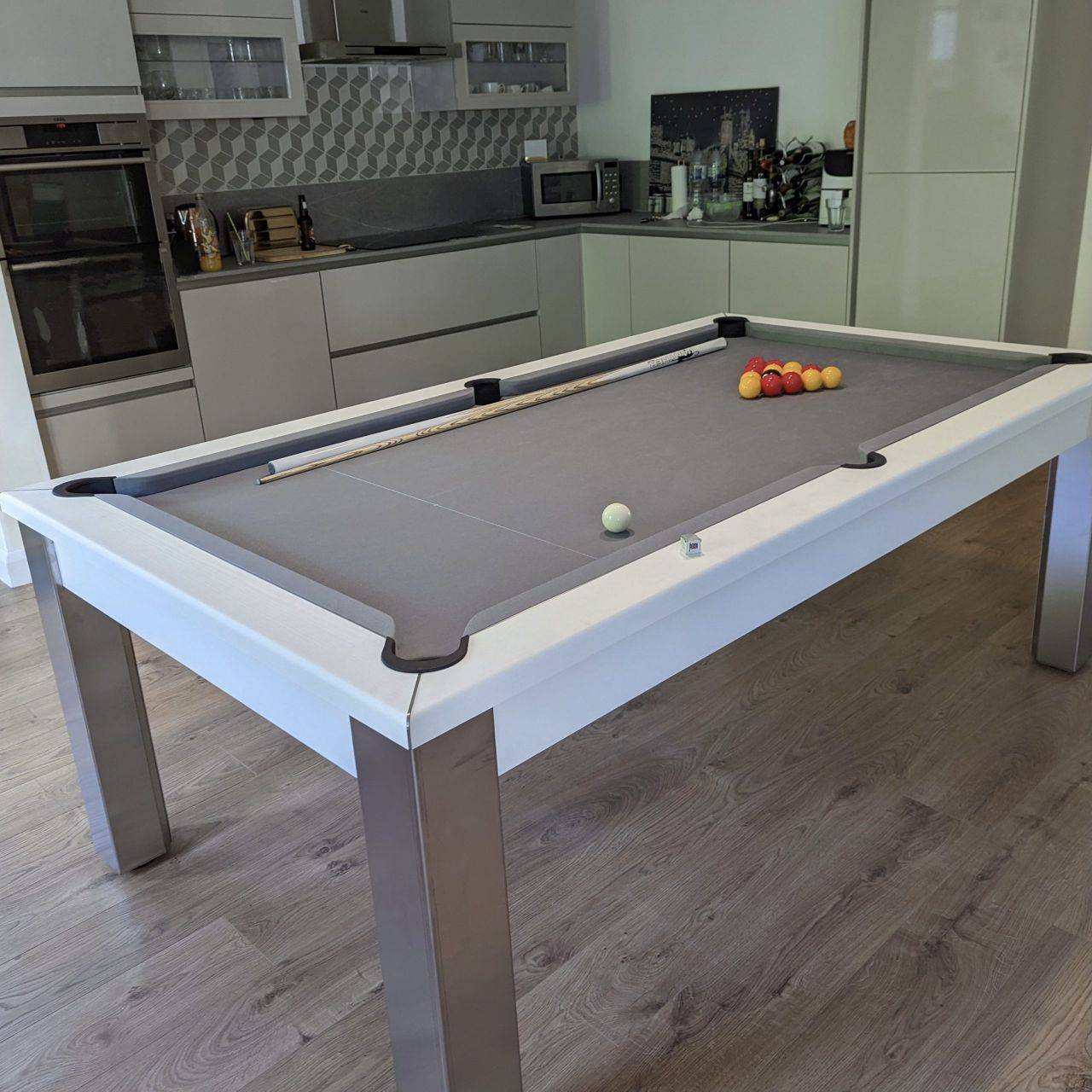The Evolution of Pool Tables: From Stone Beds to Slate
Billiards, the precursor to what we now fondly call pool, has had a fascinating journey, with the game room table at its heart evolving alongside. With roots potentially dating back to the 15th century, the journey from rudimentary stone beds to polished slate surfaces is a testament to man's quest for refinement and precision in leisure. This article will navigate the winding pathways of history, tracing the transformation of the iconic pool table.
Billiards: The Early Days
The inception of billiards can be traced back to Northern Europe, predominantly France, in the late Middle Ages. Resembling outdoor games like croquet, it transitioned indoors, with a table substituting for the ground. These earliest tables weren’t primarily used for the game we recognise today. They were simple, often adorned with an edge or 'bank' to keep the balls from rolling off.

Stone Beds Emerge
As billiards grew in popularity amongst the French aristocracy, there was a demand for smoother, flatter surfaces to enhance gameplay. This led to the use of stone beds, which provided a more uniform playing field than wooden boards. However, these stone tables were not without their flaws. Given the technology of the time, ensuring a perfectly flat stone surface was challenging. Moreover, the sheer weight of the stone made these tables cumbersome and difficult to move.
Enter the Cloth Covering
To further improve the gameplay, billiard tables started getting draped with cloth. By the 16th century, this had become standard practice. The cloth, typically made of wool, reduced friction, allowing balls to roll more smoothly. The green hue, which has now become synonymous with billiard and pool tables, was chosen to emulate the outdoor lawns where the original games were played.
The Shift to Slate
The quest for perfection did not stop at stone and cloth. By the 1830s, manufacturers began to recognise the merits of slate. Extracted from the ground, slate boasted an inherent flatness. It could be milled to perfection, ensuring an even smoother surface. Its density and weight, though considerable, offered unparalleled balance. Unlike stone, which might have inconsistencies, slate delivered a consistent bounce, making the game more predictable and fair.
Development of Rails and Cushions
While the bed of the table was undergoing transformations, the rails or 'banks' weren't left behind. They transitioned from simple wooden barriers to sophisticated cushioned rails. Originally, these cushions were stuffed with cotton or felt. But by the 19th century, rubber cushions became the gold standard. They offered consistent rebounds, further elevating the game's precision.
Design and Ornamentation
With the basic structure and materials of the table advancing, attention shifted to aesthetics. As billiards and pool were often pastimes of the elite, tables became showcases of craftsmanship. Intricate carvings, inlays, and veneers adorned tables, transforming them from mere gaming equipment to veritable pieces of art. The Victorian era, in particular, saw tables with elaborate designs, reflecting the opulence of the period.
Modern Day Advancements
The 20th century and beyond brought technological advancements. While slate remains the preferred choice for professional tables, medium-density fibreboard (MDF) has emerged as a cost-effective alternative for recreational players. The evolution has also seen the advent of tables with adjustable legs, ensuring a level playing field even on uneven grounds.
Pool tables today come equipped with heaters, especially for professional snooker games. These heaters ensure that the table remains dry, keeping the roll consistent and preventing any unintended deviation.
Moreover, the world of pool tables has expanded to include outdoor versions made of weather-resistant materials, dining table hybrids, and even digital versions that integrate projection mapping technology for a unique gaming experience.

Sociocultural Impacts and the Rise of Pool Halls
The history of the pool table is not just a story of evolving materials and design aesthetics; it's inextricably tied to the sociocultural fabric of the times. From royal courts to urban pool halls, the table and the game have witnessed and contributed to remarkable societal shifts.
The Royal Connection
The very genesis of billiards finds itself linked with royalty. King Louis XI of France, who reigned in the latter half of the 15th century, is often cited as one of the first owners of a billiard table. Such royal patronage endowed the game with a distinct status. Over the subsequent centuries, billiard tables became a staple in European palaces and estates. Mary, Queen of Scots, famously wrote about her billiards table in letters before her execution in 1587.
From Aristocracy to Democracy
While its beginnings were noble, by the 19th century, the allure of billiards had permeated beyond aristocratic circles. With the Industrial Revolution in full swing, urban centres in the UK were bustling. Billiards found a new home in public halls and taverns, making the game accessible to the masses.
The American Influence
As billiards sailed across the Atlantic, it encountered a transformation in the United States. The term 'pool' itself comes from pooling bets in horse racing, and soon 'pool rooms' emerged where people bet on races. Over time, these establishments introduced billiards tables, leading to the contemporary usage of the term 'pool' for the game.
The 20th century saw the rise of the American pool hall – a smoky, dimly-lit domain often associated with masculinity, grit, and urban life. Films like 'The Hustler' (1961) and 'The Color of Money' (1986) underscored the image of pool as a game of strategy, psychology, and at times, high stakes.

Conclusion
The evolution of the pool table mirrors the broader narrative of human history, reflecting advancements in technology, shifts in aesthetic preferences, and changes in societal structures. From rudimentary stone beds in medieval France to the high-tech, intricately designed tables of the 21st century, the journey has been long and fascinating.
Today's pool table is not just a piece of gaming equipment but a culmination of centuries of refinement, craftsmanship, and innovation. As we play a frame of pool or snooker on a sleek slate table, we're not just engaging with a game but participating in a rich tapestry of history that spans continents, eras, and cultures.
Are you looking for a Pool Table? check out our pool tables range Pool Tables





